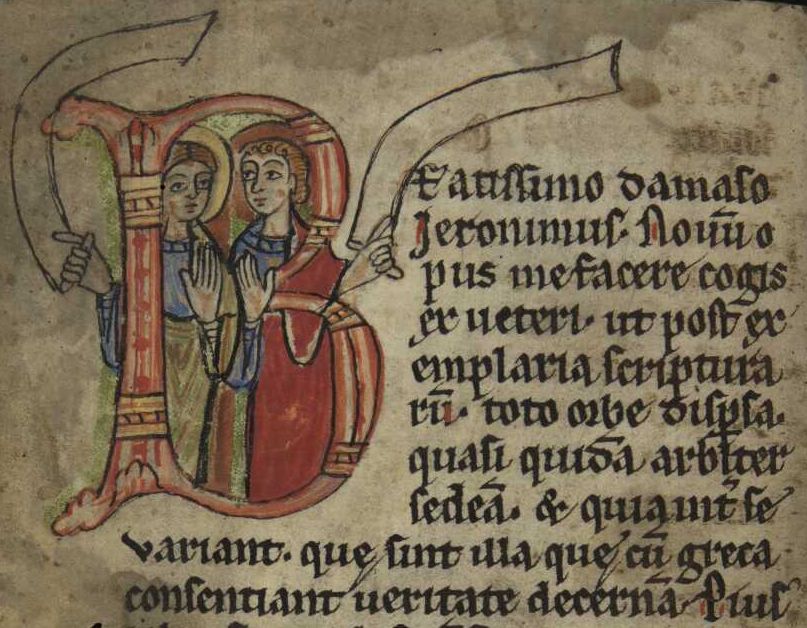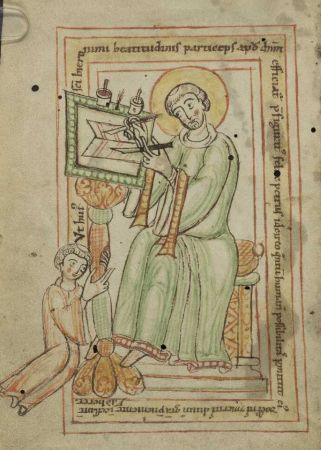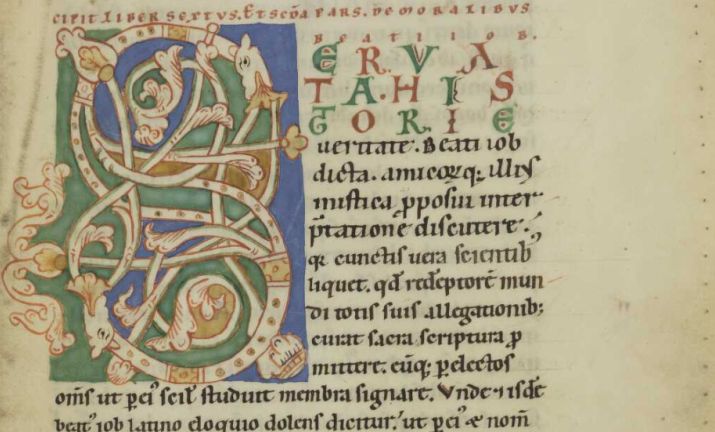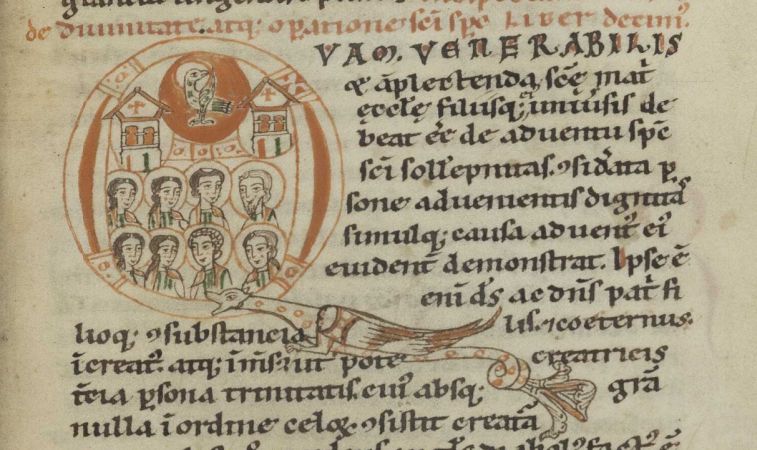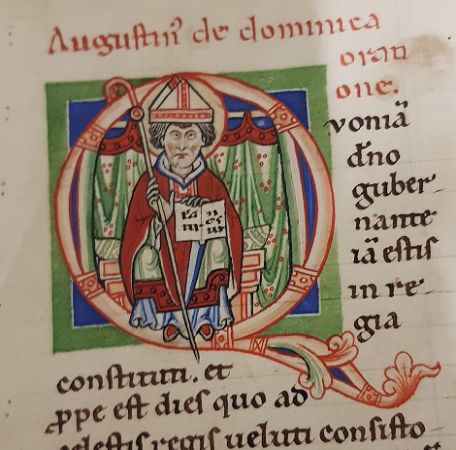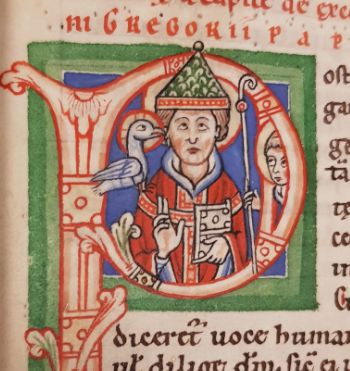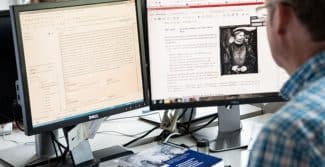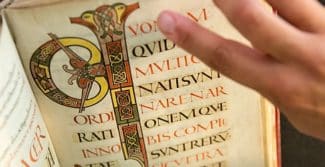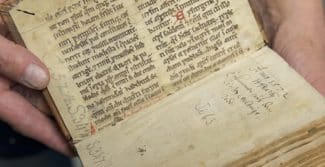13 January 2021
This project, sponsored by the Polonsky Foundation, aims to make medieval Latin and German manuscripts – primarily works originating in the libraries of northern German monasteries and abbeys – available for research and other uses. Since the project was initiated in December 2018, 205 manuscripts have been digitised at the HAB, and these can now be viewed on the project website.
Most manuscripts were written by men, but the fact that the 23 volumes of the Lamspringe Collection were produced by female authors is one of the many aspects that makes them so unusual. These medieval works are also remarkable for their impressive ornamentation, which, from the perspective of art history, makes them an extremely appealing group of illuminated manuscripts. Sixteen codices were selected for the digitisation project, and this article will examine them in closer detail, focusing on certain key features. At present, 12 of these works can now be examined online.
Founded in around 850 by Count Ricdag and his wife Emhild in the southern part of the Hildesheim diocese, this canoness convent – a more worldly and thus freer model of community life – was transformed into a Benedictine abbey in around 1130 under both the spiritual and the economic and political aegis of the Hildesheim bishops. In the 14th century it was considered one of the wealthiest and best-equipped convents in Lower Saxony. The collection of 23 manuscripts (consisting of 20 volumes of theological writings and three liturgical works) indicates that their authors and illustrators were nuns whose linguistic and theological educations were by no means inferior to those of the monks from the male orders, which to date have been the subject of more in-depth research. The works also clearly illustrate how both the scriptorium (from the Latin scribere, to write) and the library – which collected, stored and made these works available – had a significant impact on the convent as an institution and were a distinguishing feature of it.
Until the development of the printing press by Johannes Gutenberg in the mid-15th century, it was not paper but the more robust vellum that served as the medium for writing. Vellum was expensive to produce and required a great deal of physical effort. In German-speaking lands, the skins of calves and, rarely, sheep, were primarily used for this purpose. These were first stretched over frames, before they were scraped and then washed in lime to prevent ink and paint from running during the writing process. The cut and folded parchment sheets were stitched together in quires, lined, written upon and subsequently bound to form a book.
The scribe, rubricator and illustrator – in other words, the woman creating the decorative initials and all the other forms of book ornamentation – could all be one and the same person. The scribes left space for book decoration such as initials or miniatures when copying the original text onto the stitched-together parchment sheets, and it was not uncommon for these spaces to be overlooked and left blank. In addition to the at least 28 female authors, whom experts can differentiate from one another for the years 1170 to 1204, two of the 12th-century scribes are known by name: Odelgarde and Ermengarde. A colophon (a scribe’s note) also makes mention of a third scriptrix (female scribe). In terms of style, their writings can be dated to the transitional phase between the (late) Carolingian and early Gothic minuscule script, in which the characters generally appear more angled, pointed and rectangular and the space between the individual letters within a word is noticeably shorter.
With regard to decoration, it is clear that the Lamspringe nuns paid close and loving attention to ornamental details. For example, in these parchment codices we find numerous examples of larger zoomorphic and figurative initials embellished with (imaginary) animal heads and bodies as well as floral elements.
The stems and tails of the initials are often decorated with half palmettes. The downstrokes of the Q initials repeatedly appear in the forms of dragons whose bodies spew forth tendrils or whose tails end in them, as is the case in Cod. Guelf. 510 Helmst., fol. 133r, as well as in the rather colourful Cod. Guelf. 443 Helmst., fol. 2r.
The most commonly used colours were red, green and blue, as we can see in this figurative image of St Augustine (354–430) (fig. 4) sitting on a throne with mitre and crozier and presenting an opened double folio (Latin: bifolium) on which we can make out the words Pater noster – our Father. The church father’s vestments and the curtain before which he is seated are both embellished with drapery; the latter is even decorated with a red three-dot pattern.
The bowl of the P initial (see fig. 5) encircling the image of Pope Gregory the Great (540–604) is reminiscent of the Q initial in terms of its style and coloration and is probably the work of the same illustrator. Judging from the characters in the text, it too may well have been the work of the scribe who completed 204 Helmst.
It is clear that the High Medieval Benedictine abbey of Lamspringe maintained a highly creative scriptorium. Over the course of the Reformation, monasteries and convents were dissolved along with their libraries, and it often remains unclear what happened to their books. In the case of the Lamspringe manuscripts, Herzog Julius von Braunschweig-Lüneburg incorporated these 23 manuscripts into his collection in Wolfenbüttel in 1572. His actions enabled these works to survive and serve as objects of research to this day.
PURL: http://diglib.hab.de/?link=151
Find out more about his topic:
The illumination of the Lamspringe nuns is currently being catalogued in depth in a project conducted by Dr Stefanie Westphal focusing on the illuminated manuscripts held by the Herzog August Bibliothek.
Additional reading:
- Helmar Härtel (ed.), Geschrieben und gemalt: Gelehrte Bücher aus Frauenhand; Eine Klosterbibliothek sächsischer Benediktinerinnen des 12. Jahrhunderts, Ausstellungskataloge der Herzog-August-Bibliothek 86 (Wolfenbüttel, 2006)
- Helmar Härtel, ‘Gelehrte Bräute Christi: Zur Umstrukturierung der Frauenklöster im Hochmittelalter; Ein neues Ideal geistig-geistlichen Lebens’, in Die gelehrten Bräute Christi: Geistesleben und Bücher der Nonnen im Mittelalter, ed. Helwig Schmidt-Glintzer, Wolfenbütteler Hefte 22 (Wiesbaden, 2008), 7–13
Additional blog posts relating to the project ‘Manuscripts from German-speaking lands’ and the creation of medieval manuscripts:
- Milestones on the path to project realisation: A mid-term review of the Polonsky Foundation digitisation project ‘Manuscripts from German-Speaking Lands’
- Manuscripts from German-speaking lands: The HAB and Bodleian collaborate to digitise medieval manuscripts
- A visit to the Wissembourg scriptorium with Dr Christine Jakobi-Mirwald
